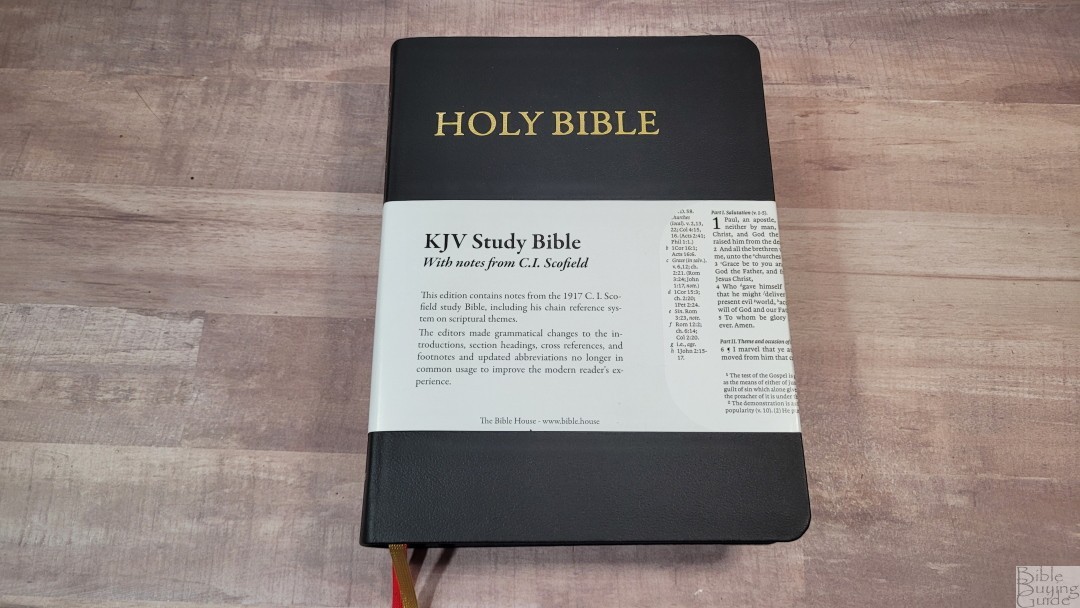
The Scofield Study Bible is the oldest study Bible on the market. It’s available in a scanned version of its original form through several publishers. That original form is an old design from 1917 with a hot metal press typeface. Bible House has brought the older Scofield into a modern design by re-typesetting it in a new layout with a modern font and printed by Royal Jongbloed. It’s available in several covers. In this review, I’ll look at the Bible House Leather KJV Bible – C.I. Scofield Notes in calfskin leather, made in the Netherlands by Royal Jongbloed.
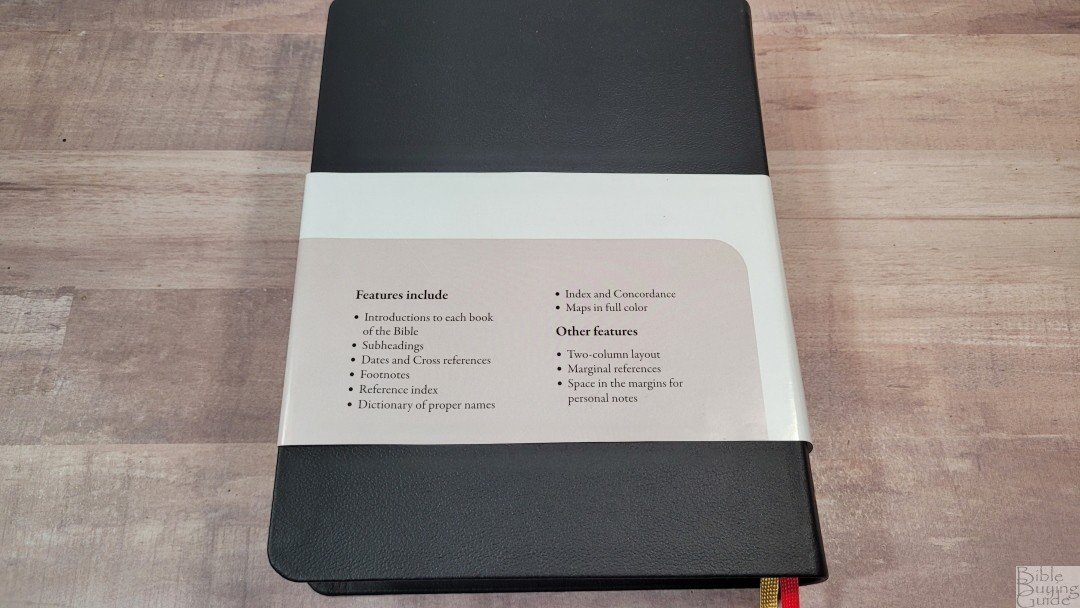
Bible House provided this Bible in exchange for an honest review. I was not required to give a positive review, only an honest one. All opinions are my own.
_________________________________________________________
This Bible is available at the Bible House website
_________________________________________________________
Table of Contents
- Video Review
- Cover and Binding
- Paper
- Typography
- References
- Book Introductions
- Study Material
- Concordance
- Daily Reading Plan
- Maps
- Comparisons
- Conclusion
Video Review
Cover and Binding
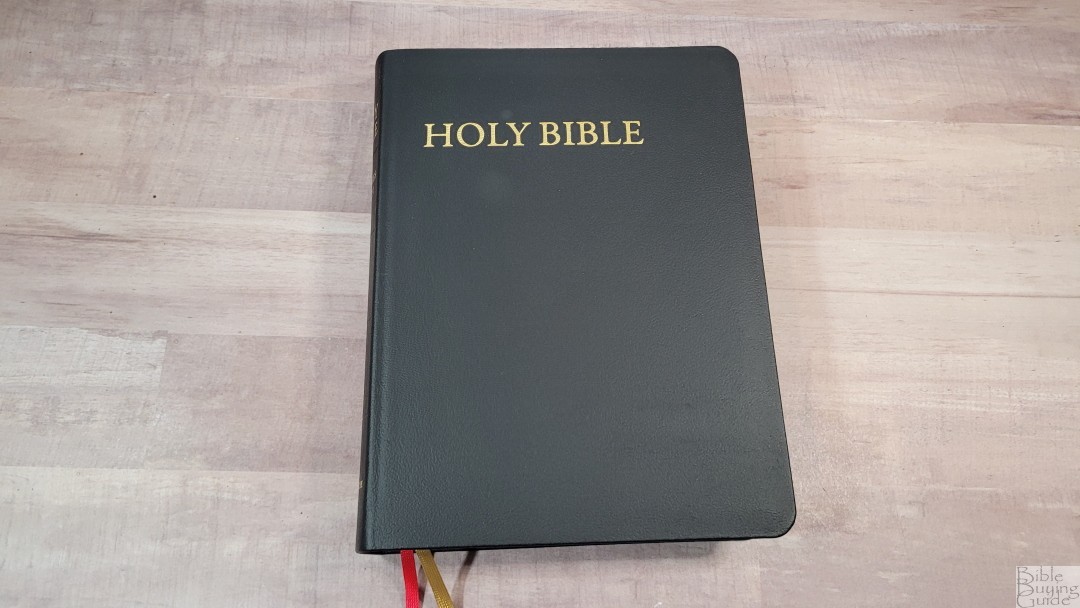
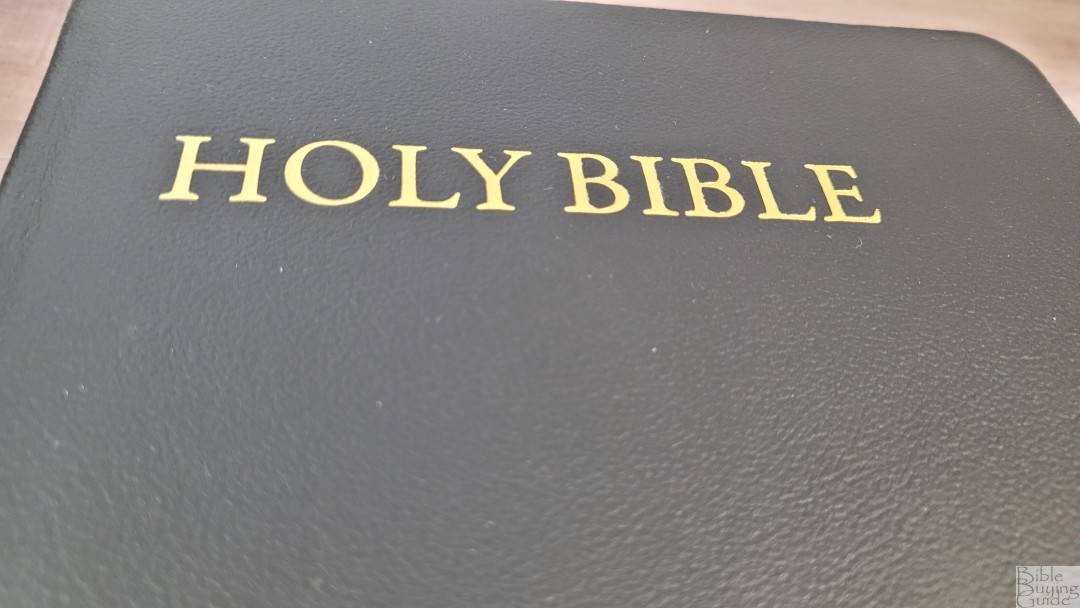
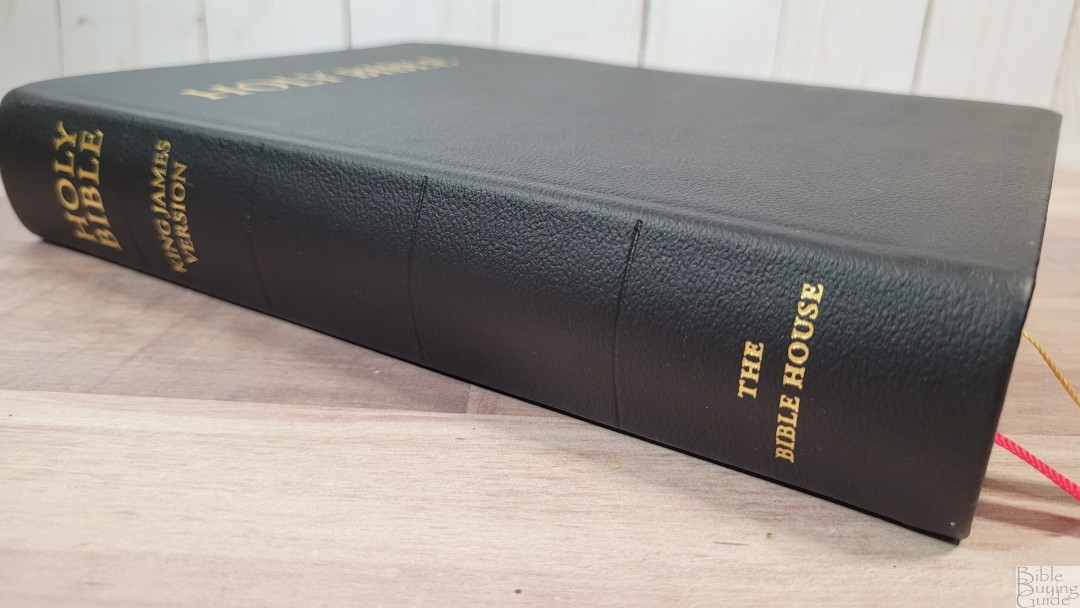
The cover is split calfskin. It has a hardcover look to it with a fold at the spine where it opens, but it’s not a hardcover. The leather is thick and stiff. It has a slightly rough grain that you can see and feel. On the front is Holy Bible stamped in large print in gold. The text is placed to the left, matching many of the older Bible designs. The spine has 4 tooled rib indications. The text is printed in gold.
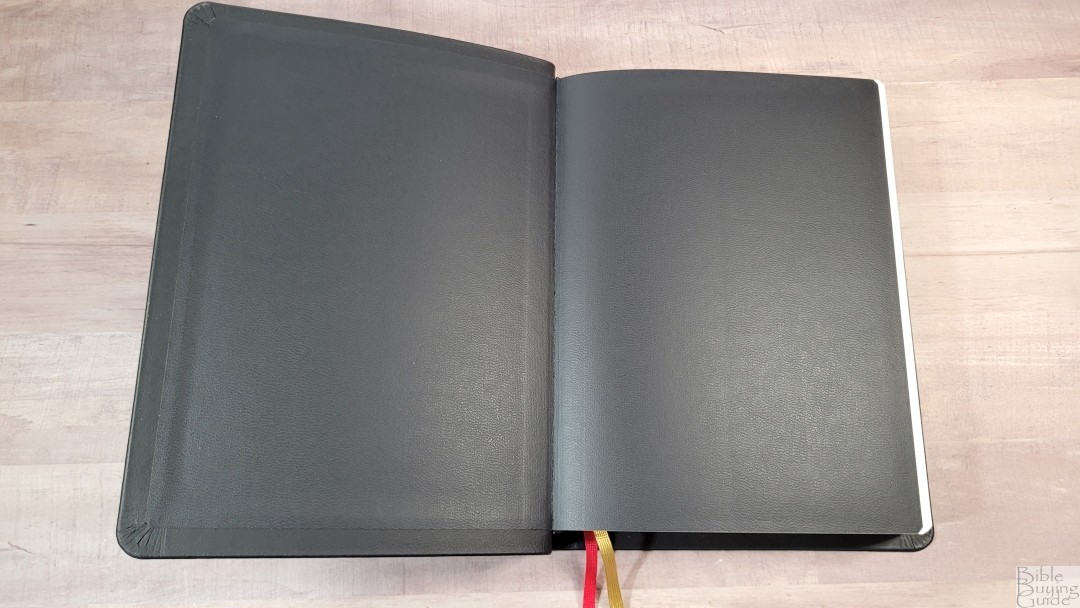
The liner is paste-down vinyl. It looks to be reinforced. The text block is sewn and has no trouble staying open perfectly to any page. It has 6 thick non-glossy end sheets in the front to give it structure. They’re blank, so you can use them for anything you want.
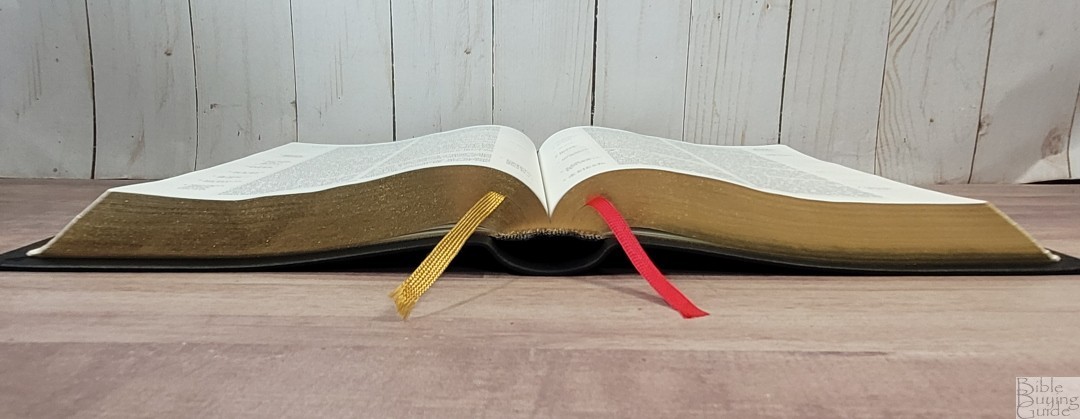
It includes two 1/4″ ribbons: gold for the OT and red for the NT. They’re long enough to pull to the corner to open the Bible with just enough of the ribbon left to hold it. We did have to apply a fray check to the end of the ribbons. They started to unravel and we applied fray check immediately. The overall size is 6 3/4 x 8 7/8 x 1 1/2″ and it weighs 2 lbs, 7.6 oz. This is a good all-around size for general use.
Paper
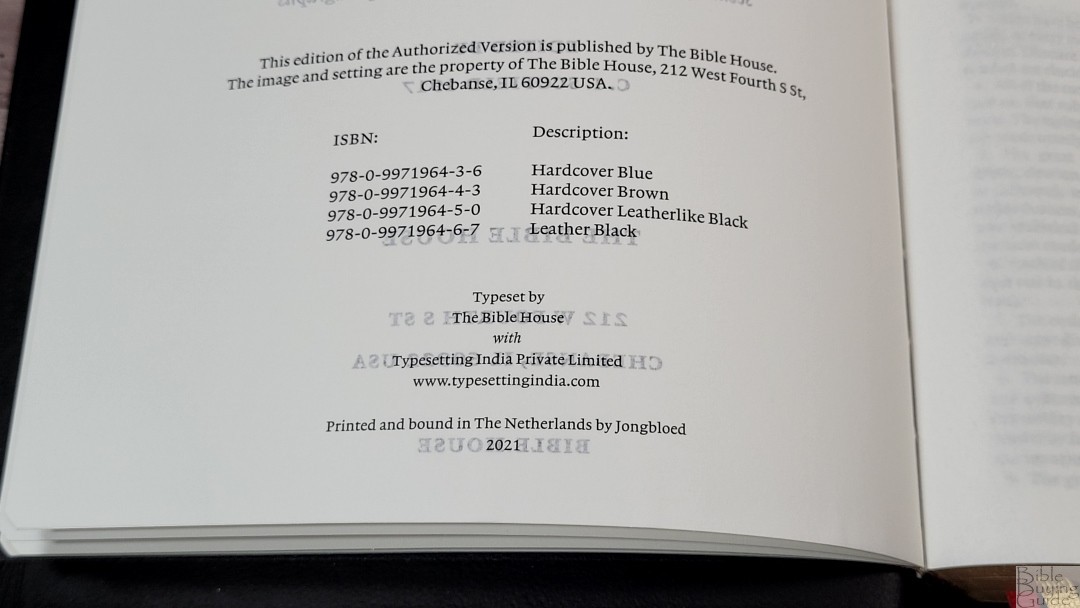

The paper is 30gsm ThinOpaque. This is a popular paper used in today’s Bibles. While it doesn’t have the extra pigment and coating of 28gsm Indopaque, it’s still an excellent paper. It’s off-white in color and has a texture that’s just rough enough to turn the pages easily. I found this paper easy on the eyes for both reading and preaching. The page edges are gold gilt. There are six blank Bible pages and two blank thick end sheets in the back that could be used for notes.
Typography

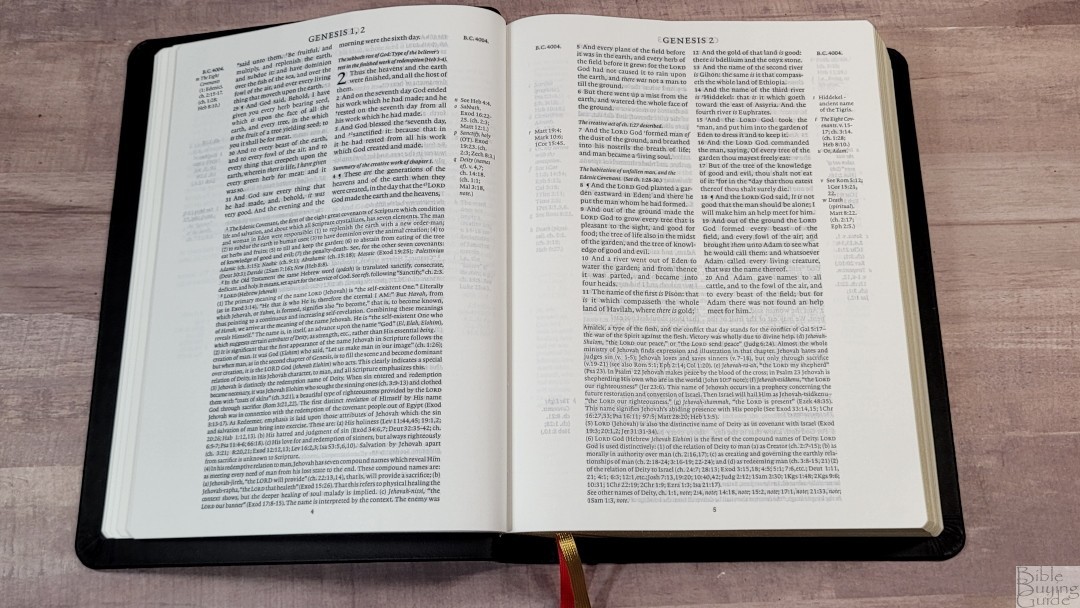
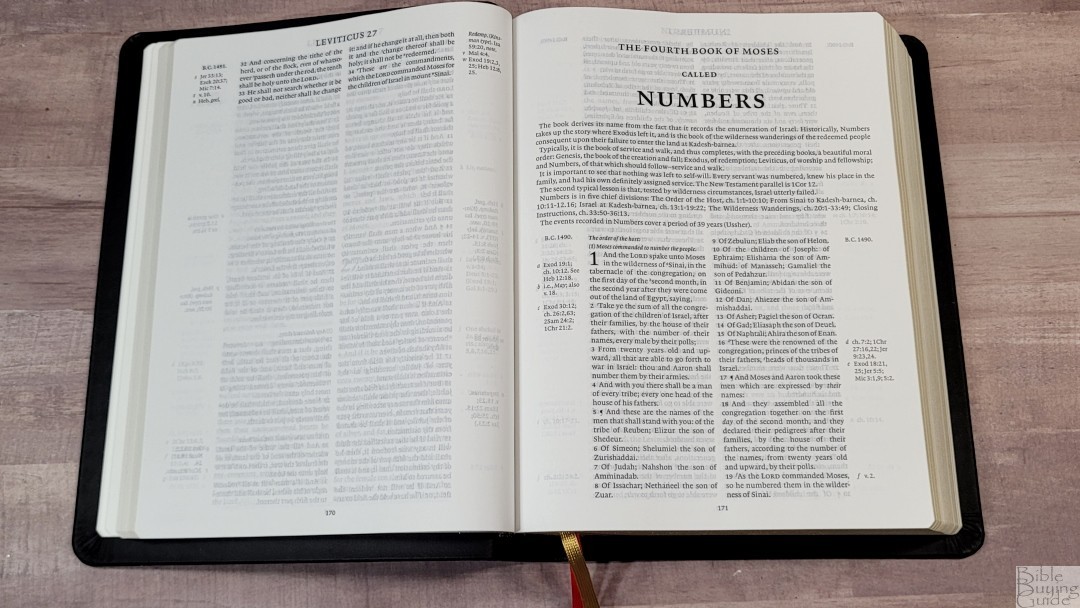
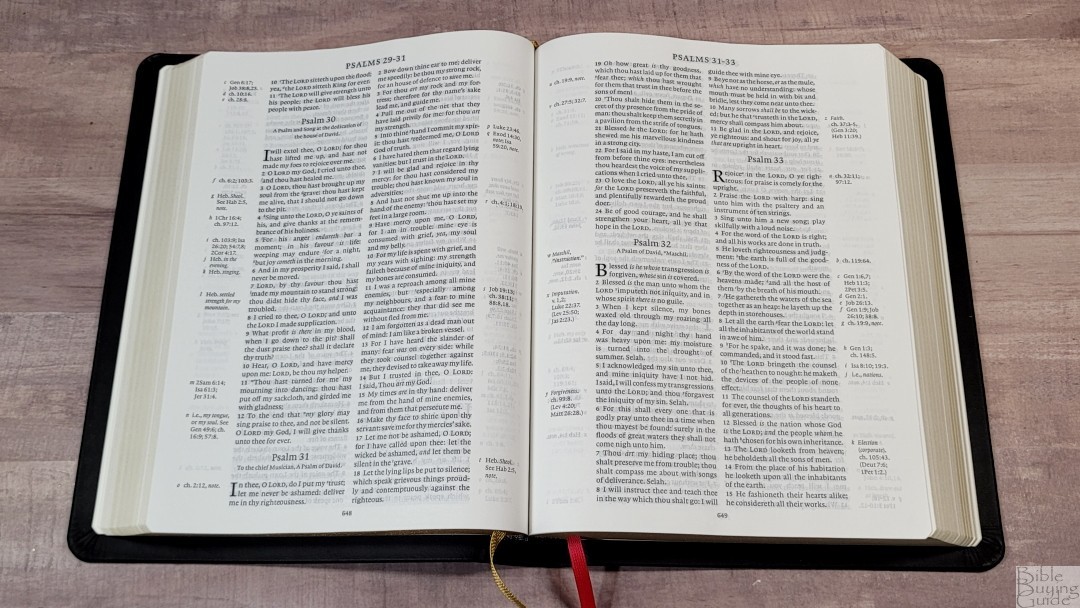
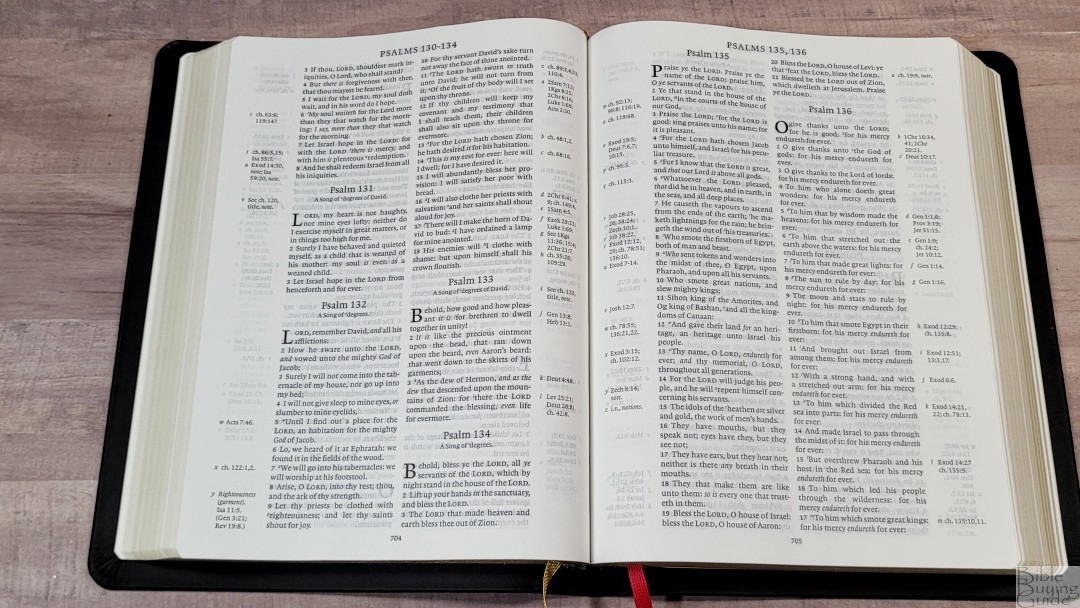
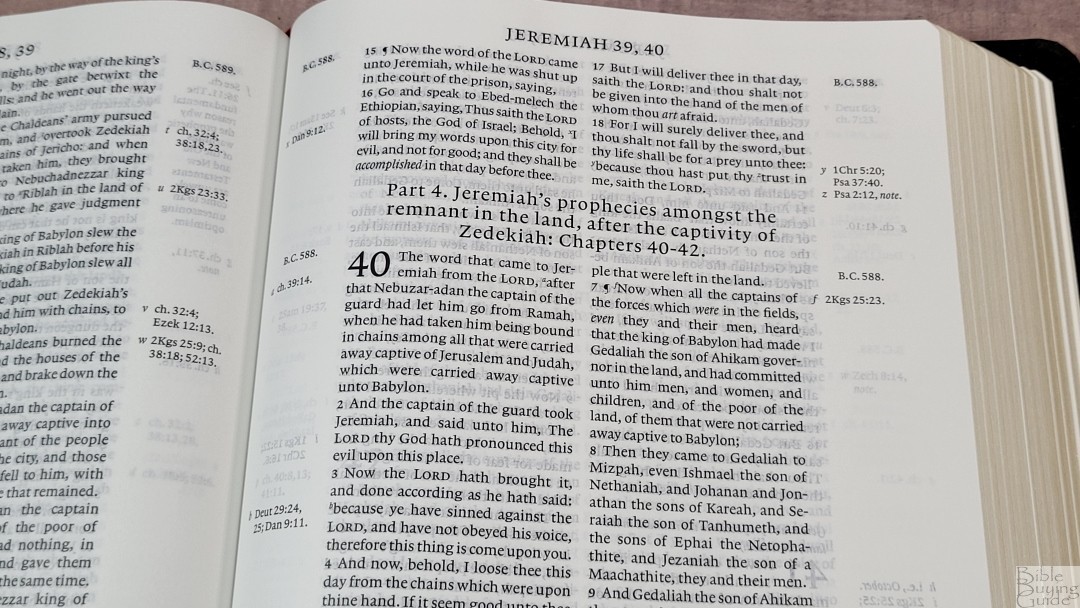
The text is set to double-column verse-by-verse with references and footnotes in the margins next to their verses and commentary in a single column at the bottom of the page. The commentary is in a smaller font that looks like footnotes. The text also includes section headings in italics with references for parallel passages. The header shows the book name and chapters that appear on that page in the center. The footer shows the page number in the center. The date of the event is placed at the top of every column of references. The text includes cross-reference and footnote keys that are small and easy to ignore. Small numbers key the text to the commentary.

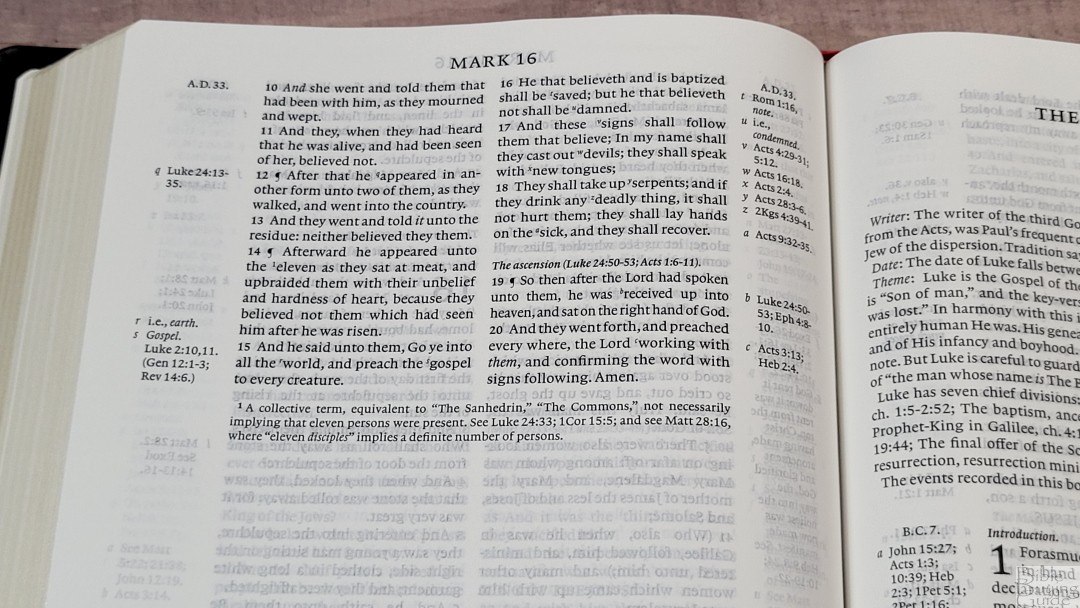
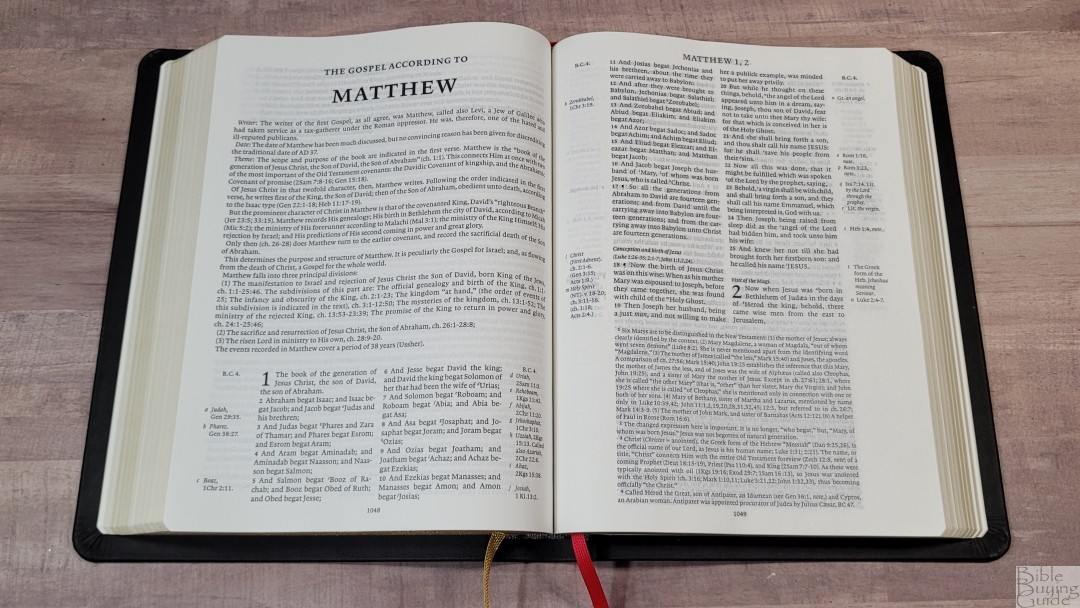
The typeface is Lexicon no. 1. This is the same typeface used in many modern Bibles. It’s an 8-point text in black letter. It’s darker than most Lexicon No 1 that I’ve seen. It has around 7-8 words per line with enough space to not feel cramped. The text is clean and sharp. The text is line-matched, so the lines of text are printed in the same location on both sides of the page. There are a few pages that aren’t matched perfectly, but most are. This does improve readability. The paper is opaque enough that the text isn’t affected. Paragraphs are marked with pilcrows. The text includes italics for supplied words and does not include self-pronouncing marks, keeping the text clear and clean. It includes lots of section headings. It also includes larger breaks with titles within the books. Most pages have room in the margins for notes.
References and Footnotes
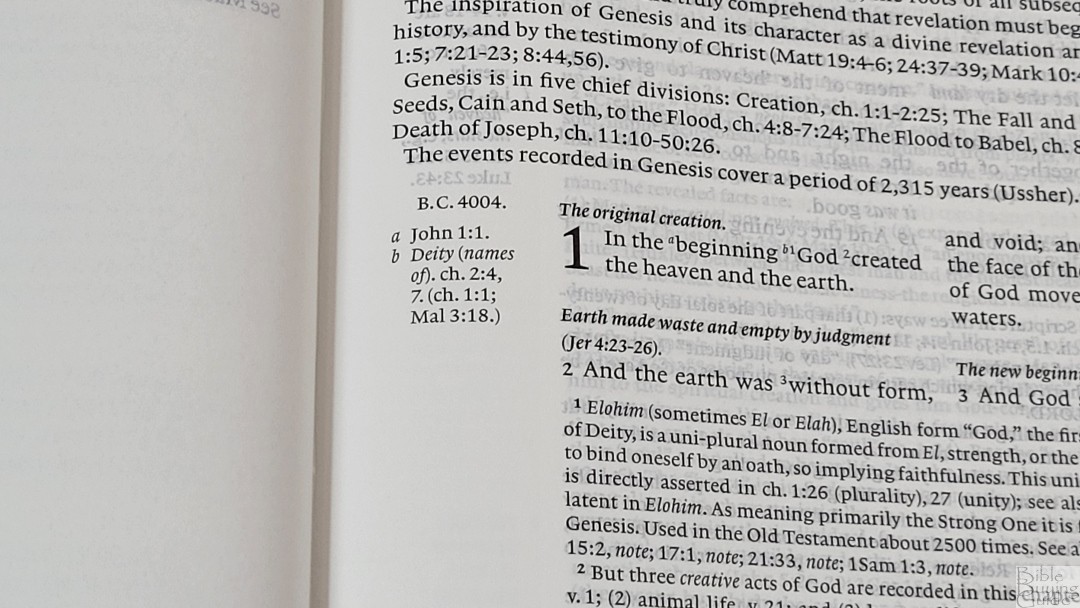
Cross-references and footnotes are keyed to the text with small superscript letters. Since it uses letters for both, it doesn’t identify if the letter is for a cross-reference or a footnote. They’re placed next to the verses they correspond to, making them easy to find and use. The date using Usher’s Chronology is placed at the top of each column of references.
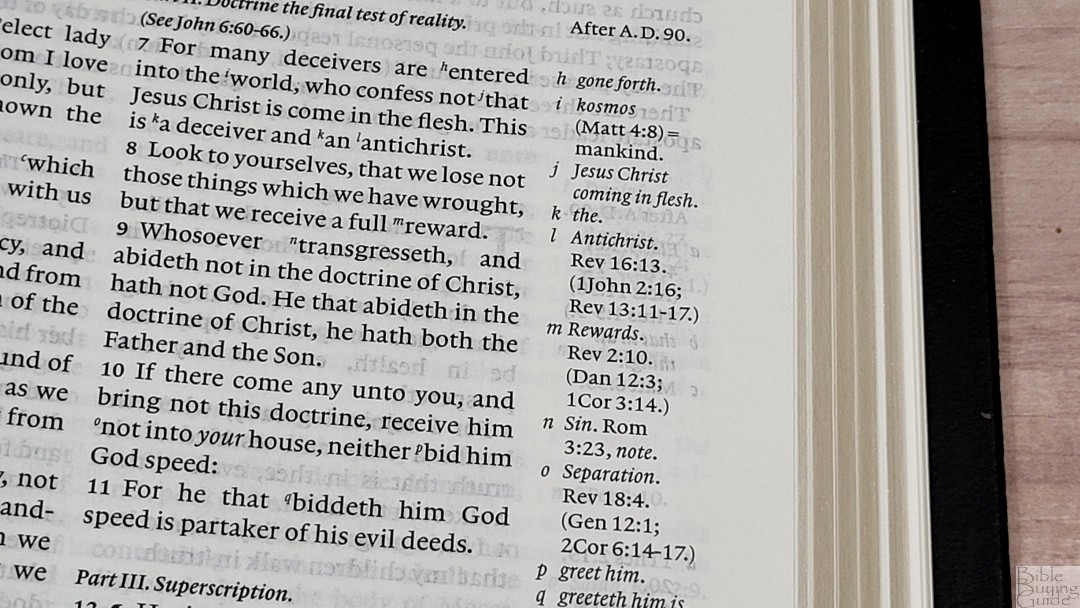
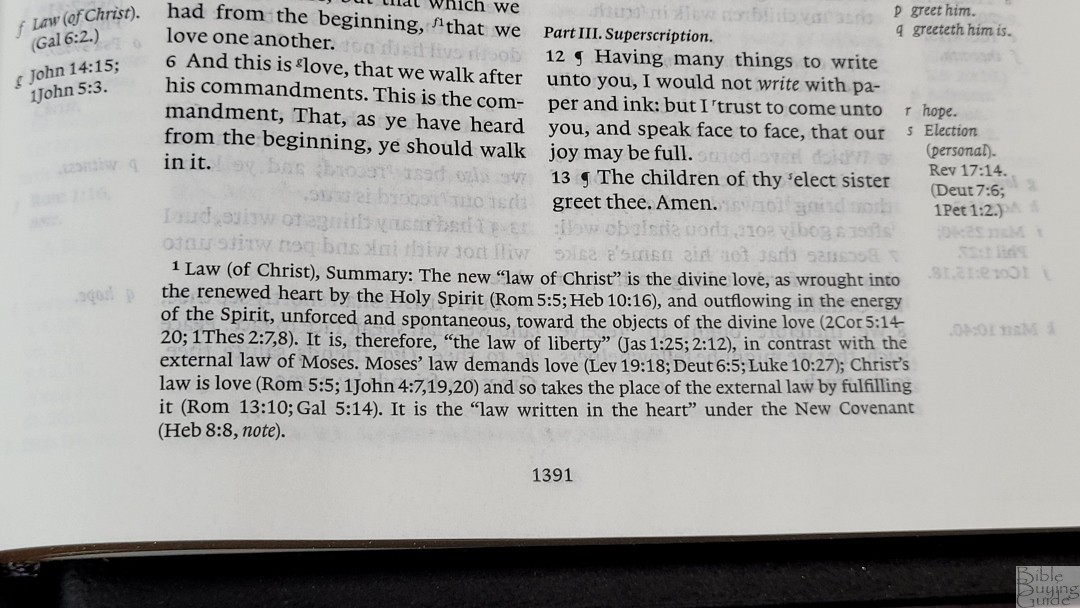
They also include a chain system with a subject and the next reference in the chain. The chains also show the first and last references in parenthesis so you can start at the beginning of a chain or go to the summary from anywhere in the chain. The summary appears on the page of the last verse of the chain and is part of the regular commentary on that page. The original included charts, but this version does not.
Here are some example references to help you compare:
- Genesis 1:1 – Jn 1:1; Diety (names of) Gen 2:4, 7; Gen 1:1; Mal 3:18
- Deuteronomy 6:4 – Mk 12:29
- Isaiah 9:6 – Lk 2:7; Jn 3:16; 1 Jn 4:9; Christ (first advent) Is 28:16; Gen 3:15; Ac 1:9; Kingdom (OT) vs 6, 7; Is 11:1-2; Gen 1:26; Zech 12:8; Israel (prophesies) vs 6, 7; Isa 11:1-3; Gen 12:2,3; Rom 11:26
- Matthew 17:20 – Mt 16:8; 21:21; Lk 176; Faith Mk 9:23; Gen 3:20; Heb 11:39
- Mark 11:23 – Mt 17:20; Lk 11:1; 17:6; Jn 14:13, 14
- Mark 12:29 – Jehovah Dt 6:4
- John 1:1 – Rev 19:13; Jn 17:5; Heb 1:8, 13; 1 Jn 5:20
- John 2:19 – Mt 2:61; 27:40
- Acts 2:38 – Ac 3:19; Mt 3:2; Ac 17:30; Mt 26:28; Rom 3:23
- 1 John 1:1 – Jn 1:1; 1 Jn 2:13; Jn 5:24; Ac 4:20; Jn 1:14; 2 Pet 1:16, 17; Lk 24:39; Jn 20:27; Jn 1:1, 14
Section and Book Introductions
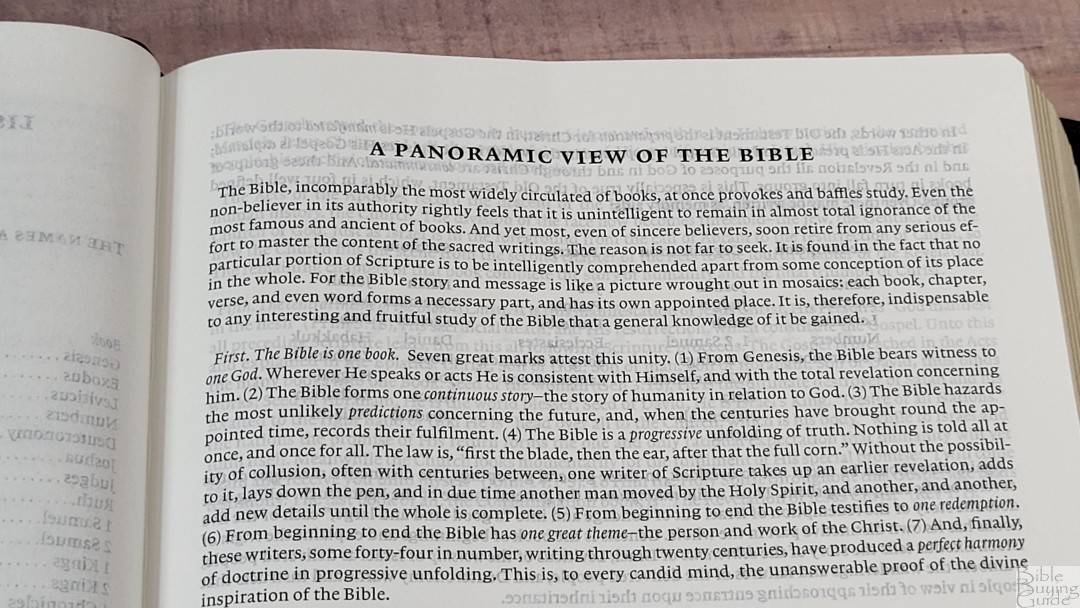
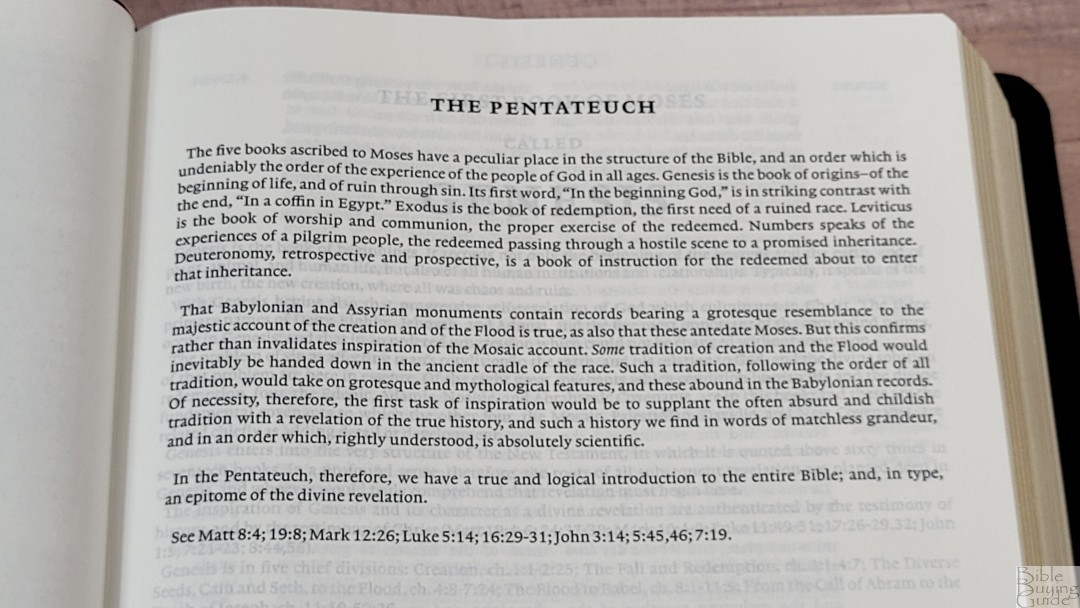
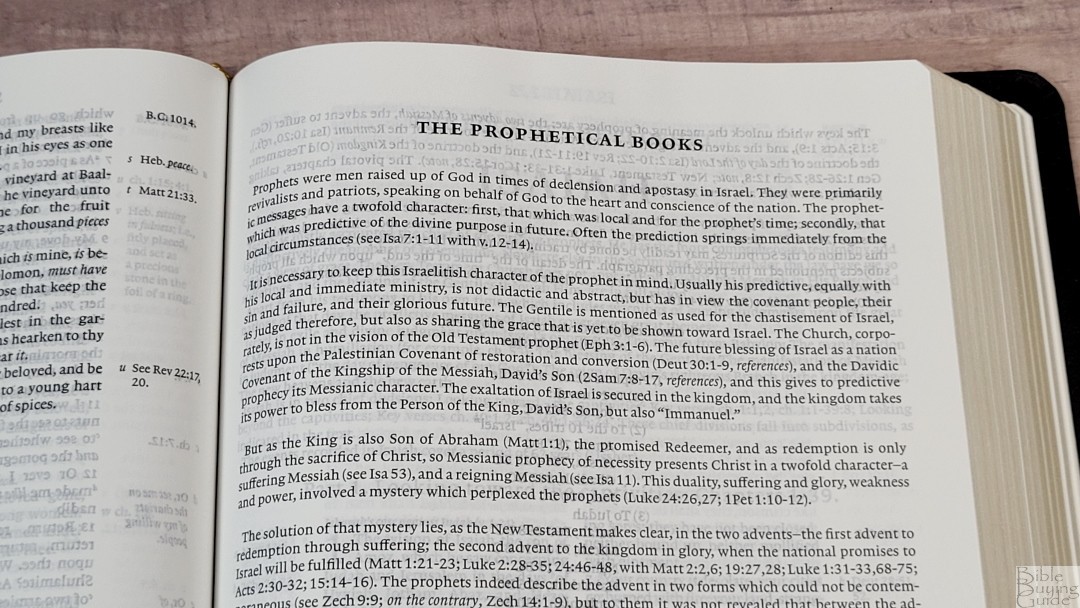
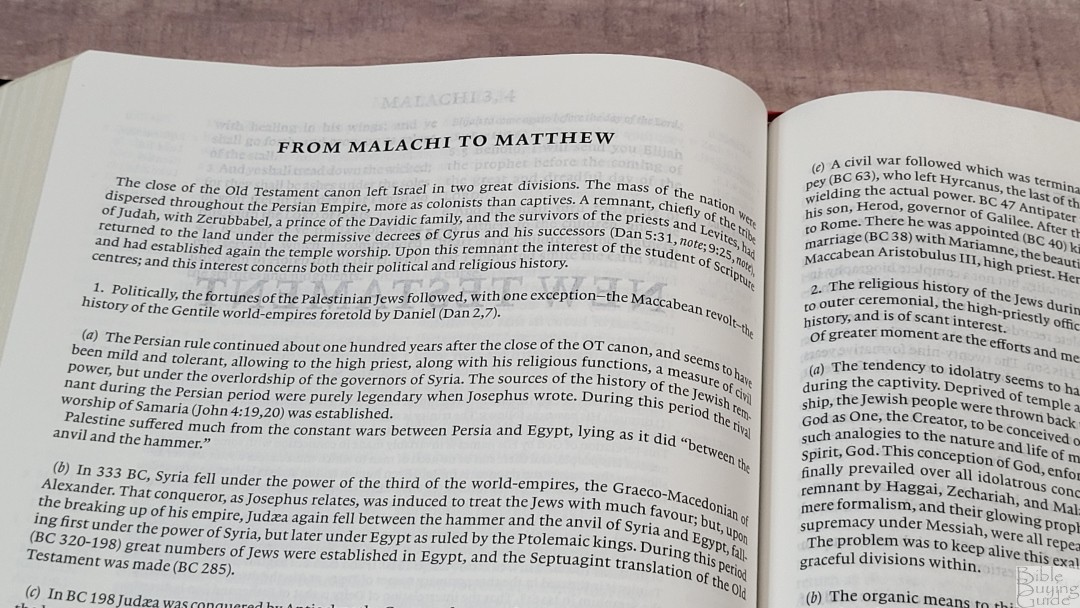

The section and book introductions have been updated for grammar. The various sections contain individual introductions that are placed before the section. They include a few paragraphs that talk about the genre of the books and the key points. They also provide Scripture references.
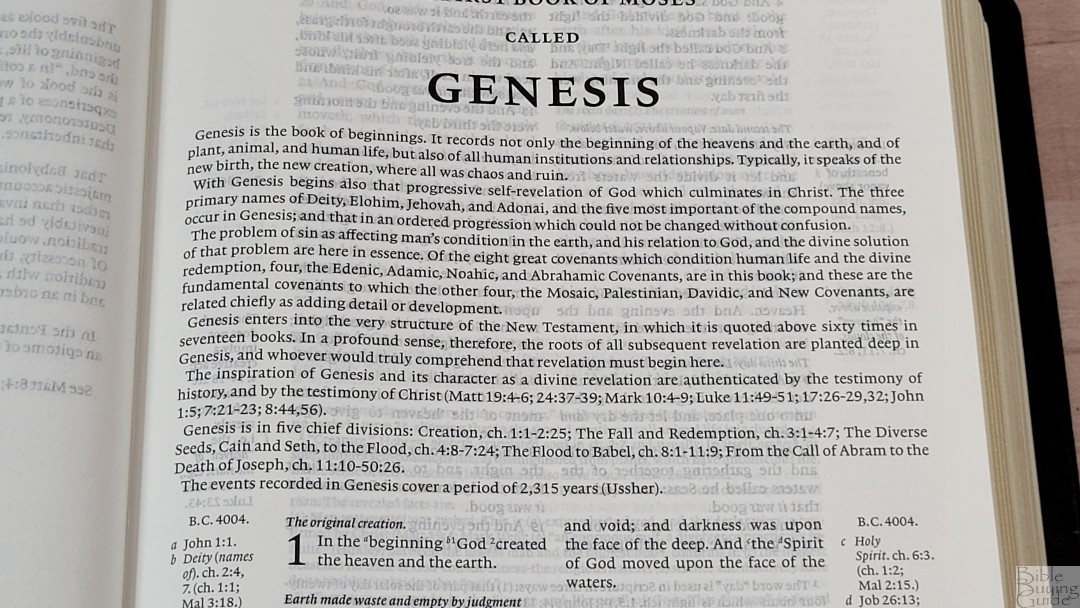
Book introductions take a few paragraphs and cover information about the writer, date, theme, divisions, and the length of years the book covers. The dates the events took place are according to Usher’s chronology. I found them well-written and informative. They span the entire text area of the page.
Study Material
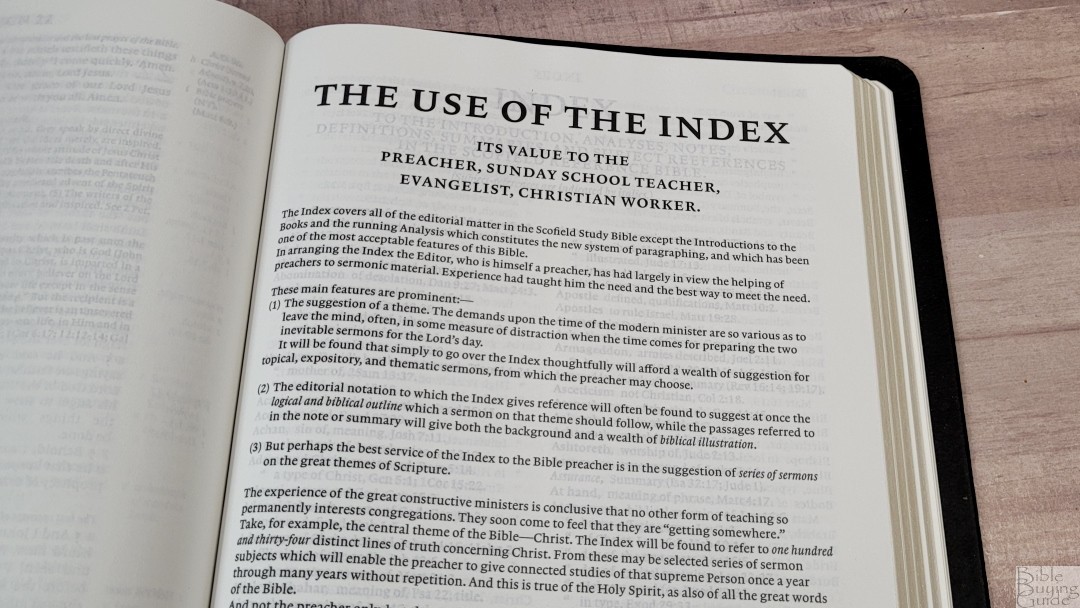
All the study material has also been re-typeset into a modern font. The study material includes commentary, book introductions (mentioned above), and lots of indexes. The editors made some grammatical updates to improve the modern reader’s experience. This includes grammatical changes to the introductions, section headings, cross-references, and footnotes. They’ve also updated abbreviations that are no longer in common usage. Like all study material, use it for reference and do your own study prayerfully.
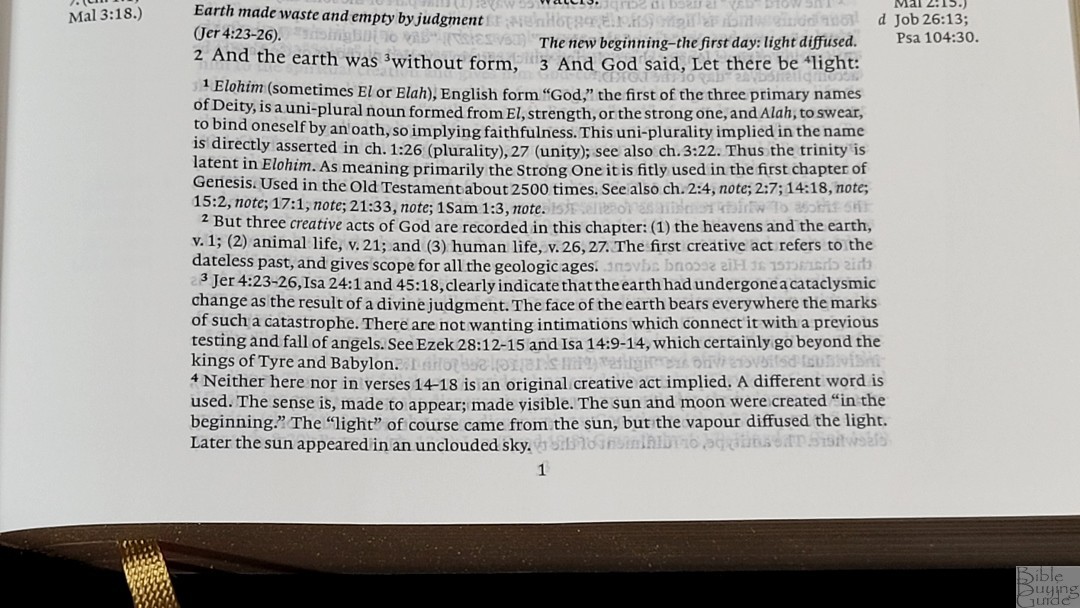
Commentary – The commentary is placed at the bottom of the page and it’s keyed to the verses with numbers. It provides the number in the verse and in the commentary, but it doesn’t provide the verse number in the commentary to know which verse the note corresponds to. The smaller font gives the impression of footnotes. There aren’t a lot of notes. Also, they cover themes found on that page rather than verse-by-verse commentary. They include information about Hebrew and Greek.
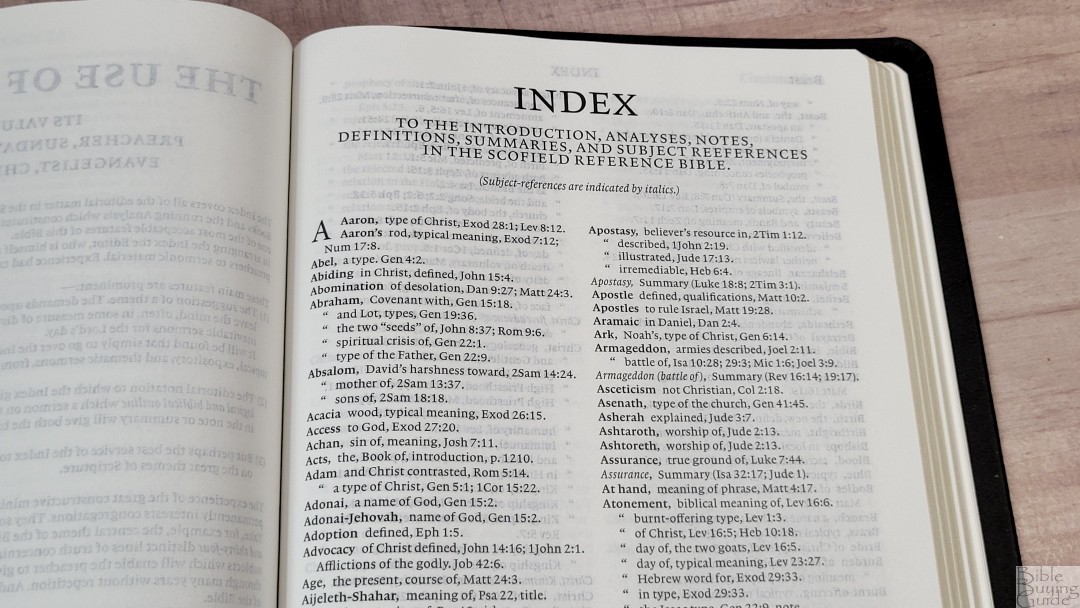
Index – this is a 12-page index to the tools in the Scofield. It covers the analyses, notes, definitions, summaries, and subjects. It includes everything except the book introductions and running analysis (section headings). It’s great for sermon prep, Sunday school class preparation, etc.
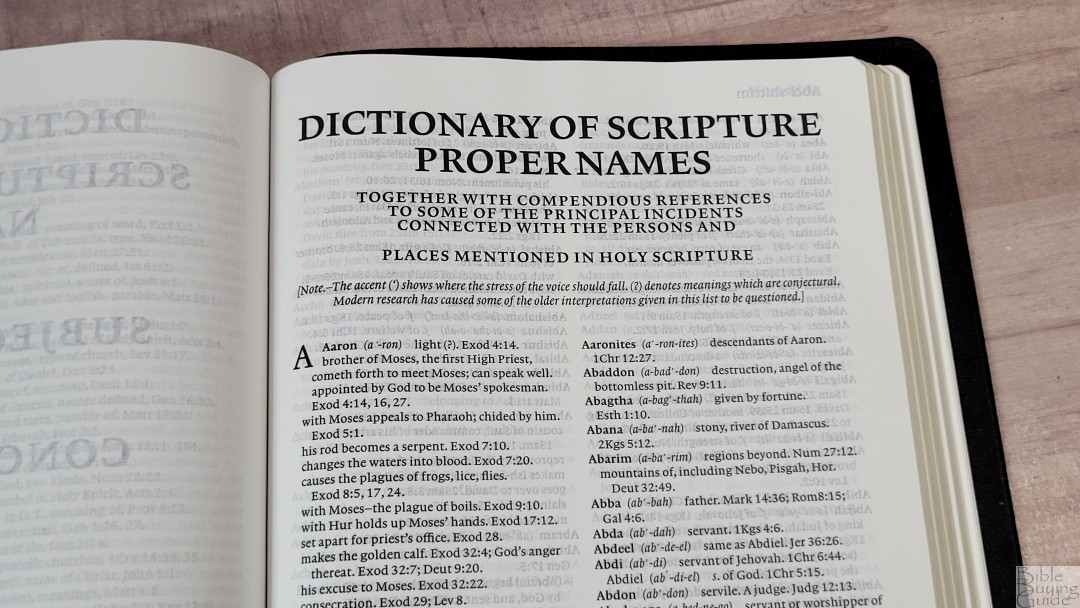
Dictionary of Scripture Proper Names – this is a 67-page index that includes every proper name in the Bible. It shows the names, how they’re pronounced, a short description, and Scripture references.

Subject-Index – This is a 54-page topical index that I consider to be one of the best indexes in a Bible. It includes larger topics and subtopics. It’s excellent for sermon prep and personal study.
Concordance
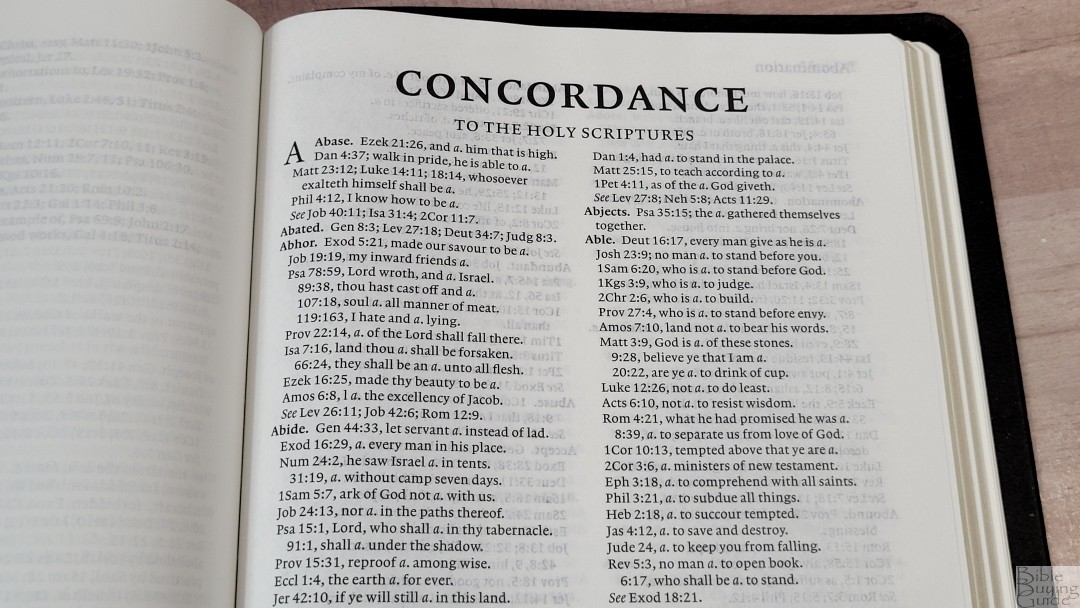
The concordance is 234 pages with 2 columns per page. The font is at least the same size as the text. It includes lots of entries. After the standard references, it provides a few more to see. This is an excellent concordance for study and sermon prep. Here are a few example entries with the number of references they provide to help you compare:
- Christ – 15
- Christian – 3
- Faith – 133
- Faithful – 57
- Faithfully – 4
- Faithfulness – 11
- Faithless – 4
- God – 60
- God (an idol) – 20
- Goddess – 3
- Godhead – 3
- Godliness – 14
- Godly – 14
- God Save the King – 1
- Praise (n) – 41
- Praise (v) – 25
- Pray – 45
- Prayer – 39
Daily Reading Plan

The daily reading plan provides two readings per day: one from the OT and one from the NT in standard biblical order. Each month is separate. It shows the day and readings for each day. It includes Feb 29th, so you’ll need to read extra for 3 out of 4 years.
Maps
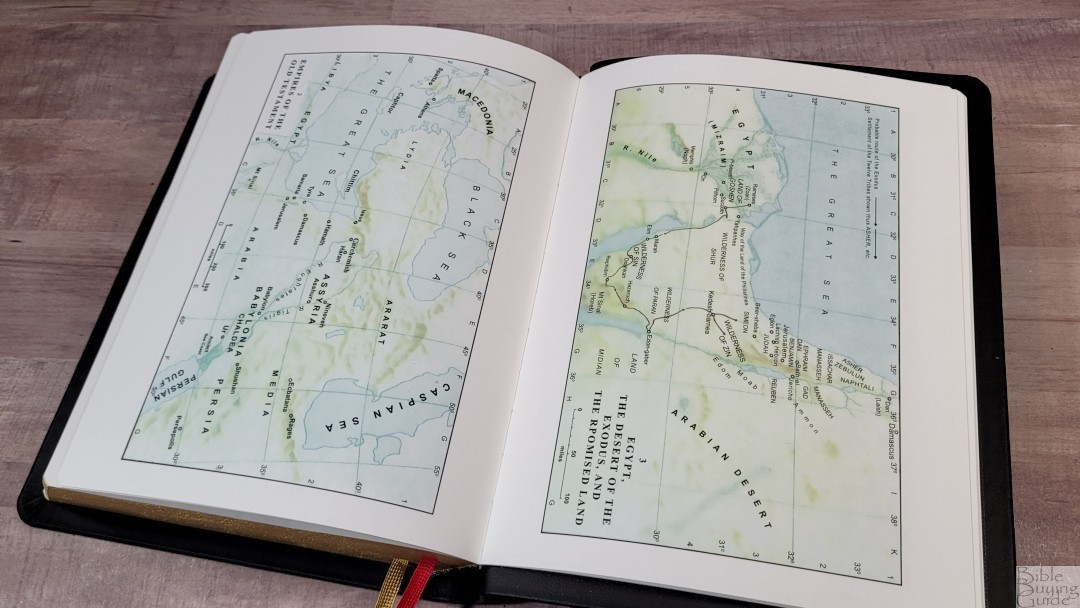
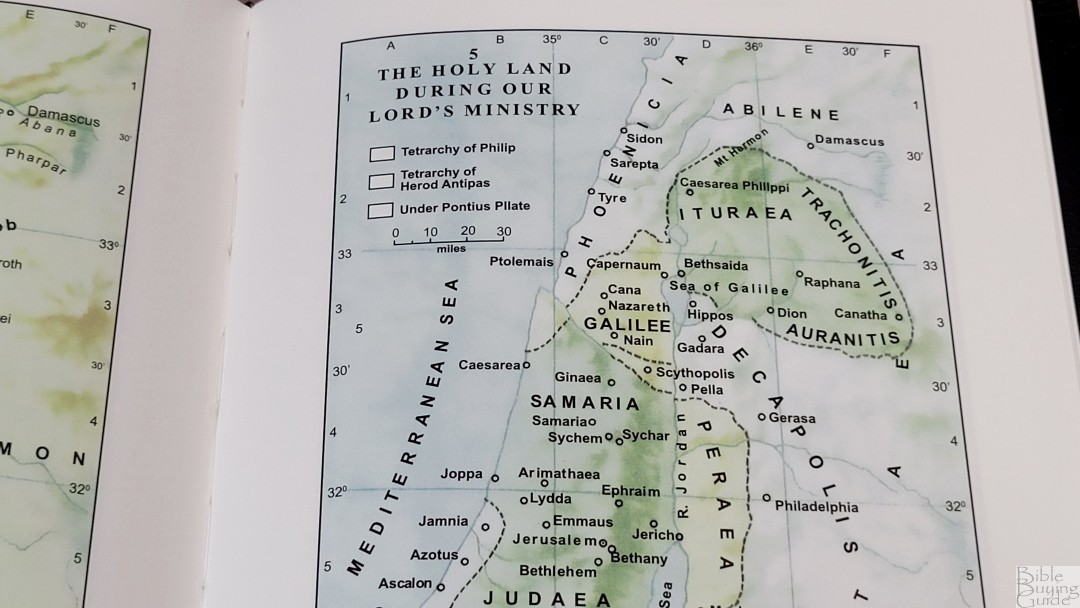
It has 8 color maps printed on thick, non-glossy paper. The colors look like faded shades of blue and green. The text is sharp and clear, so I know the colors are a design choice. The first map shows the locations of the other maps. The maps include longitude and latitude, distance, cities, territories, routes, etc. It does not include an index to maps.
Maps include:
- The World of the Bible
- Empires of the Old Testament
- Egypt, the Desert of the Exodus, the Promised Land
- The Holy Land in the Time of the Kings
- The Holy Land During Our Lord’s Ministry
- Gallilee in the Time of Christ
- Jerusalem in the Time of Christ
- The Journeys of Paul the Apostle
Comparisons
Here’s a look at two Bibles that have similarities in content or design.
The KJV Store Wide Margin Classic Study Bible with C.I. Scofield Notes
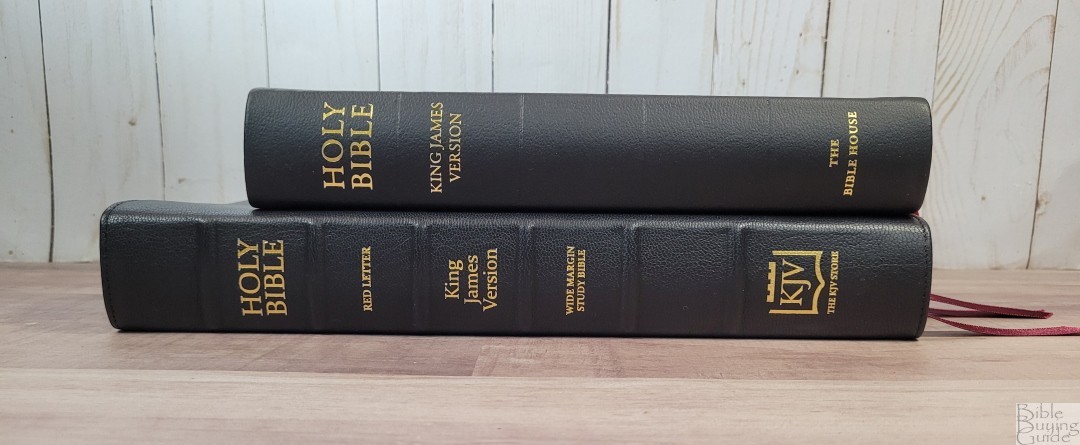
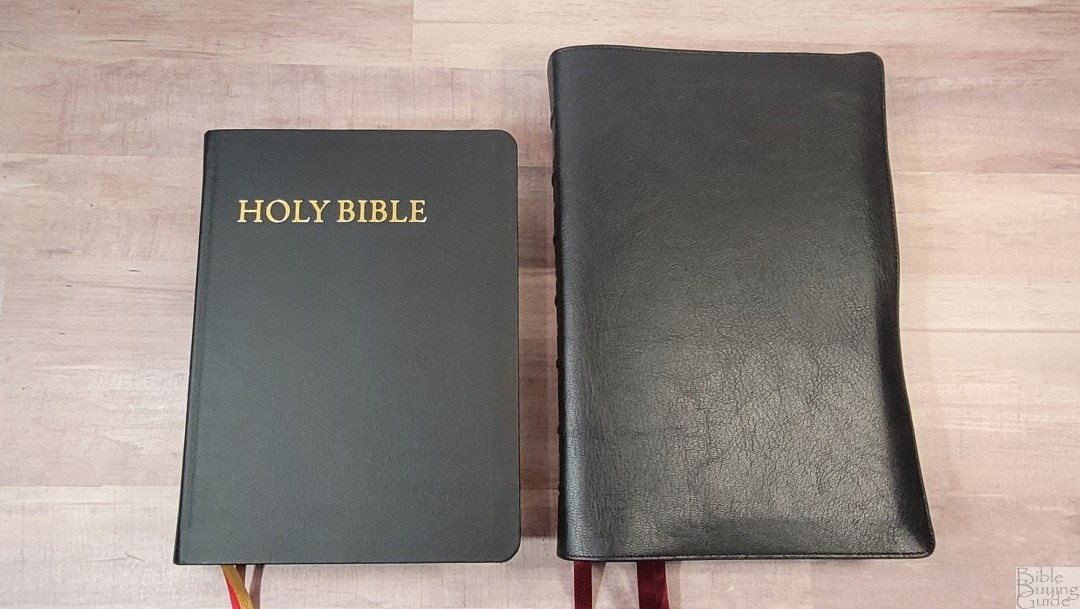

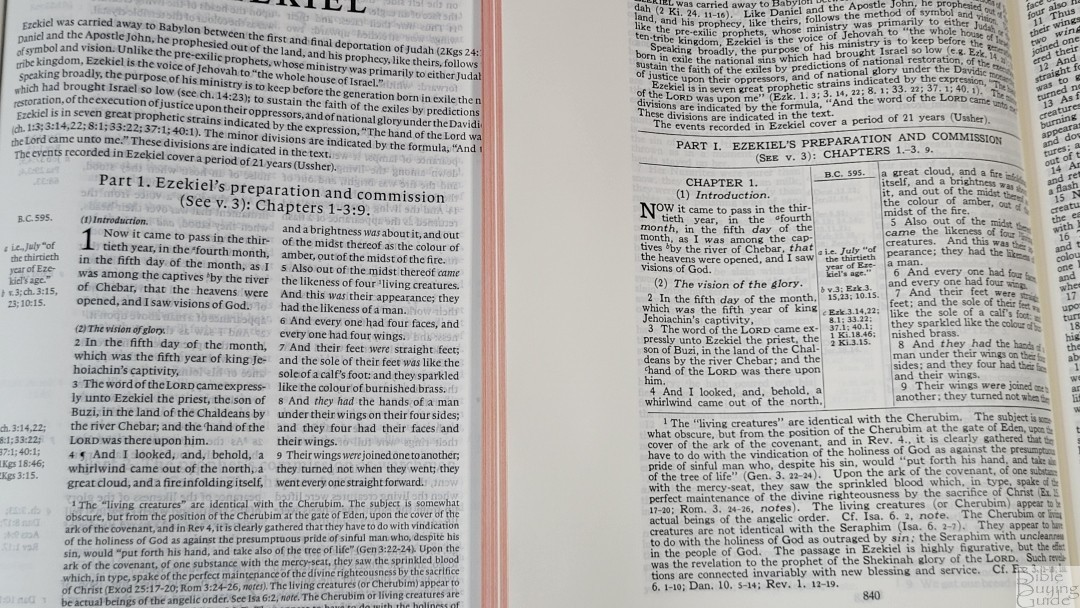
The KJV Store Wide Margin Classic Study Bible with C.I. Scofield Notes is also printed by Royal Jongbloed. It presents the original 1917 Scofield with wide margins on 3 sides. It’s text is a lot more compact.
TBS Westminster Reference Bible

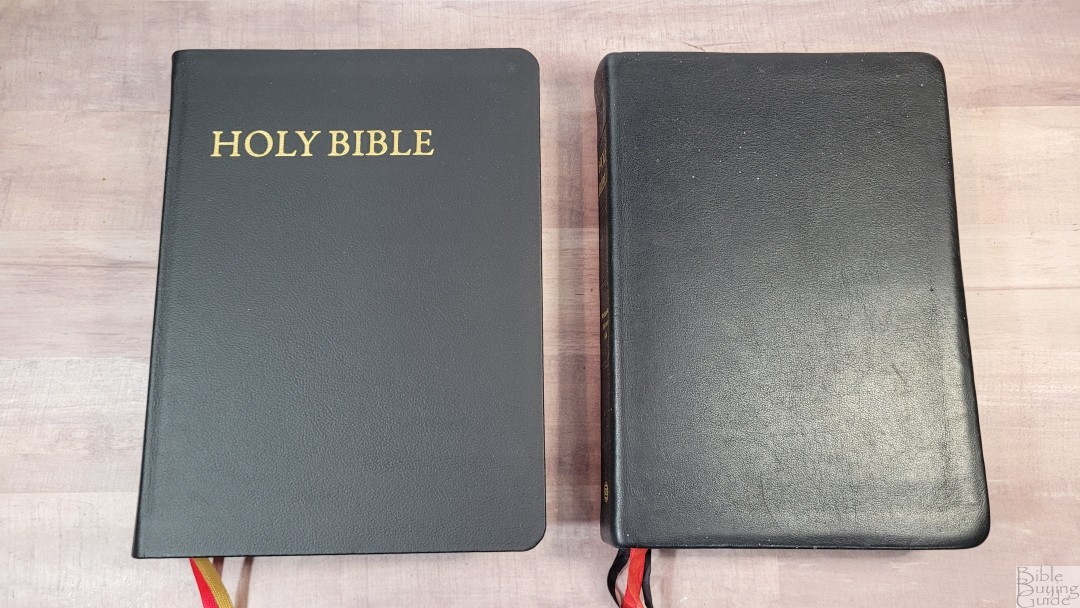
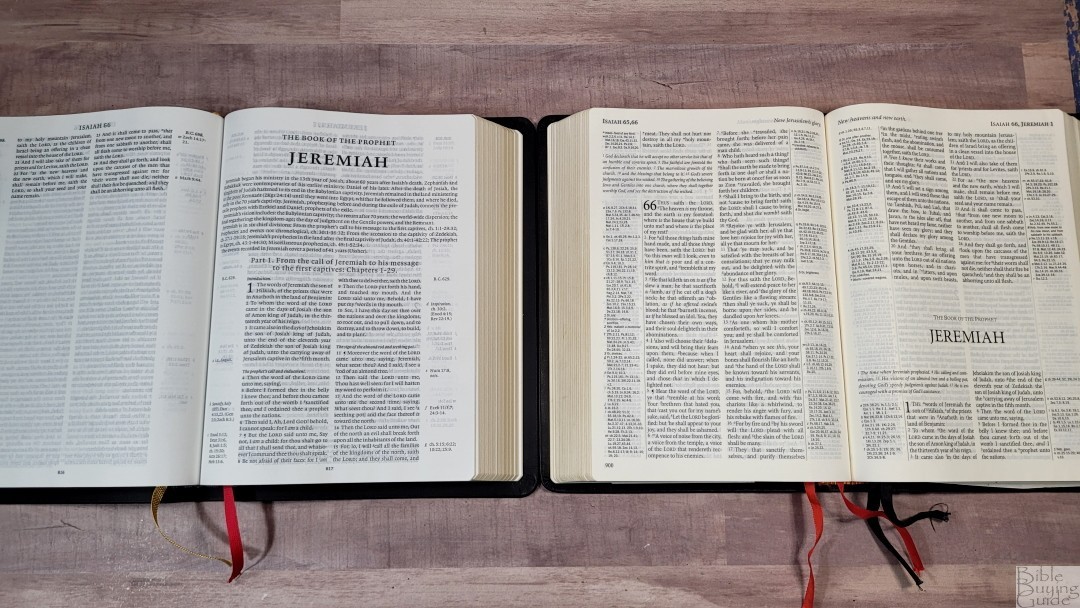

The TBS Westminster Reference Bible isn’t a study Bible, but it’s very similar in its design. The older editions (the one shown here) were also printed by Royal Jongloed. The current edition is printed by Print Corp in Belarus. The designs are so similar that I think if Scofiled fans like one they’ll like the other.
Conclusion
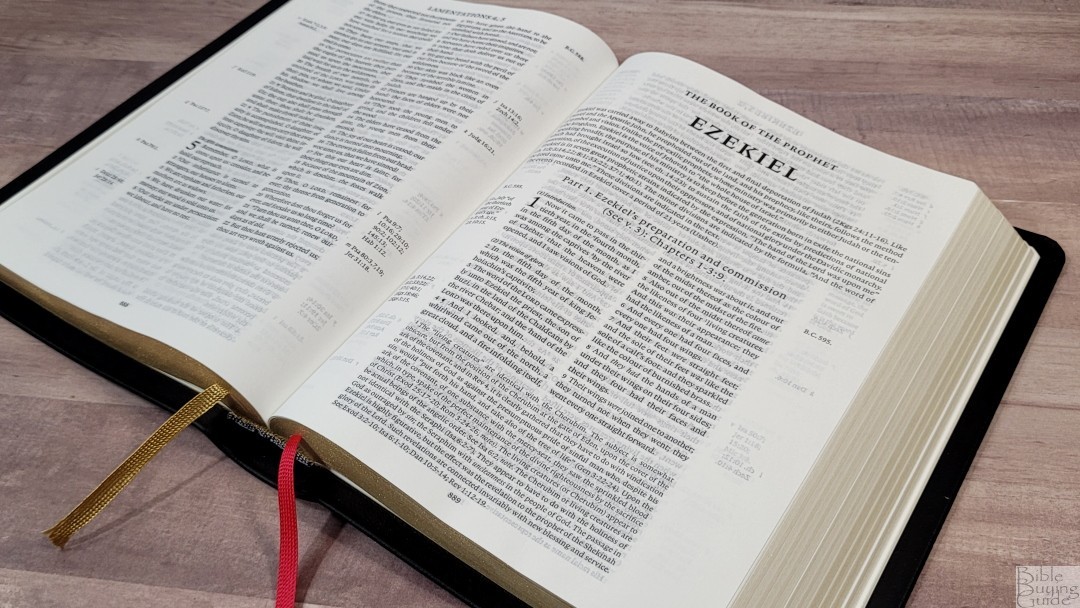
The Bible House Leather KJV Bible – C.I. Scofield Notes in calfskin leather brings the 1917 Scofield into modern design. This is my favorite version of the 1917 Scofield. I found the text highly readable. The section headings are helpful and easy to ignore. The reference, footnote, and commentary keys in the text are very small, so those with poor eyesight may have trouble reading them. I would like to see the index name added to their headers to make them easier to use. I’d also like to see more colorful maps. The layout is designed well and the construction and materials far exceed their price point. If you’re interested in a 1917 Scofield with a modern design, the Bible House Leather KJV Bible – C.I. Scofield Notes in calfskin leather is a great choice.
_________________________________________________________
This Bible is available at the Bible House website
_________________________________________________________
Bible House provided this Bible in exchange for an honest review. I was not required to give a positive review, only an honest one. All opinions are my own.


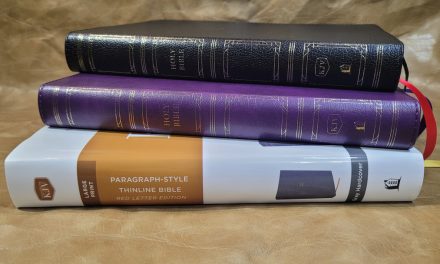
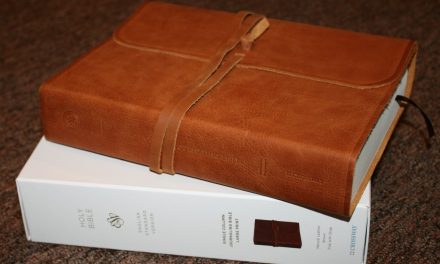

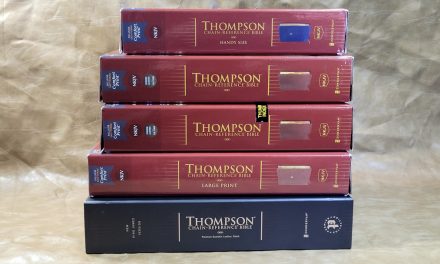





Randy, thanks for another great review! I’ve commented on the YouTube review!
I’d just like to add here that it’s a pity that a cheaper edition isn’t available, and/or that the indexes aren’t separately available.
I’ve always thought that the Scofield had great helps even for non-dispensationalists!
And this is definitely another Study Bible that would be a great asset as an A4 looseleaf or interleaved production!
https://bible.house/bibles/black-kjv-bible-c-i-scofield-study-notes/
Jim, Many thanks!
I am not dispensational but have found some of the Scofield notes helpful. I gave away my NKJV Scofield a while back and when I saw this article I decided to get one of these. I am very impressed by the quality overall, especially for the price point. This is superior in quality to many Bibles selling for twice the price and printed in China.